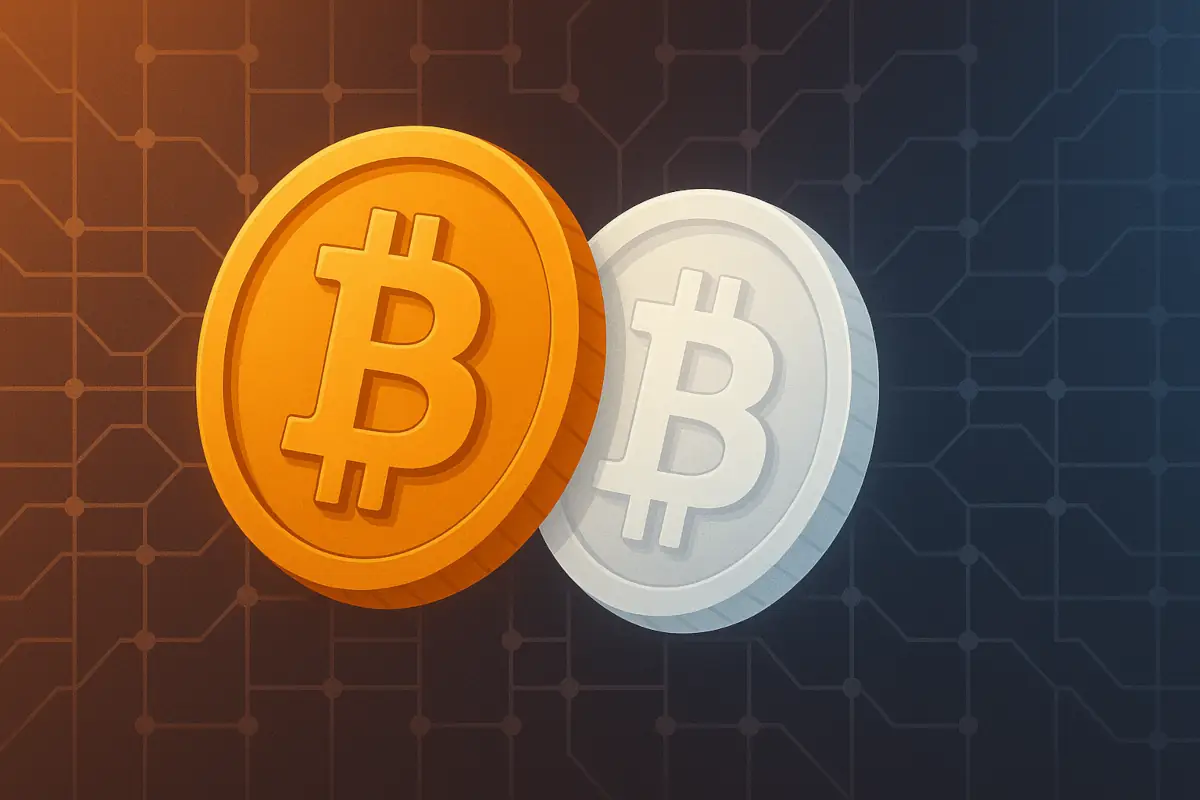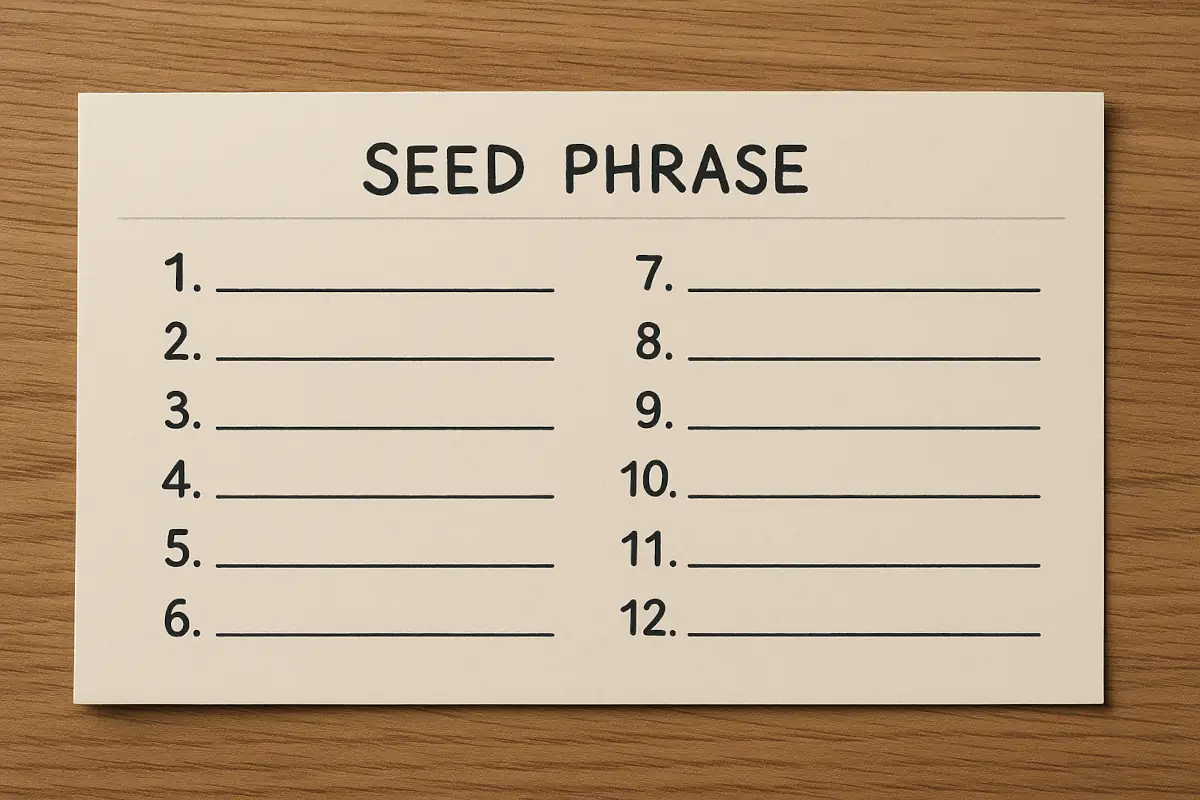When it comes to cryptocurrency, few things are more important than protecting the seed phrase that unlocks it. A seed phrase is not just a backup; it is the master key to all funds stored in a crypto wallet. Understanding the right ways to protect this vital information can mean the difference between protecting your investments and losing everything.
Below, we take a deep dive into the meaning of a seed phrase, how recovery works, common mistakes to avoid, and the best storage solutions available today.
Table of Contents
Click to Expand
What is a Seed Phrase?
A cryptocurrency seed phrase, often called a mnemonic, is a collection of 12 to 24 simple words generated automatically when a new wallet is created. Wallet software or hardware produces this phrase, which holds everything needed to control the assets within. The words are not random – they contain encoded information that makes accessing and restoring the wallet possible.
Seed phrases are used to sign transactions via private keys, which are derived directly from them. Thus, possession of a seed phrase means complete control over the wallet’s funds. Due to the gravity of what they represent, users are urged to secure them with the highest level of care. Wallet software usually keeps the private keys hidden, requiring only a password or pin for daily use.
Although many different standards exist, BIP39 (Bitcoin Improvement Proposal 39) is widely accepted for generating and interpreting seed phrases. This standard, created initially for Bitcoin, is now a foundation across the entire crypto space, supporting countless digital currencies.
How Seed Phrase Recovery Works in Real Life
Wallets generate the seed phrase first, even before public and private keys exist. These words are then converted into binary data, used to create the critical key pairings that make digital transactions possible. The system that organizes these keys often uses a hierarchical deterministic structure, enhanced by BIP44 and BIP32 protocols alongside BIP39.
Once wallets are set up, users can perform daily operations without handling their seed phrases again. Passcodes and pins control access, keeping private keys invisible and secure. However, if a wallet is lost or damaged, the only way to recover it is by entering the original seed phrase into another compatible device.
This critical process emphasizes why storing seed phrases securely, separate from the main device, is non-negotiable. Without a backup seed phrase, there is often no method to recover lost funds, no matter how much or how little is involved.
5 Best Ways to Protect Your Seed Phrase
1. Paper Wallets
One of the earliest methods used for storing seed phrases was the simple paper wallet. This method involves writing the seed phrase on a piece of paper and hiding it securely. While easy to create, paper wallets have serious vulnerabilities: paper can be destroyed by water, fire, or general wear and tear.
Paper wallets can also be easily lost, mistakenly thrown away, or stolen. Nevertheless, for newcomers to cryptocurrency, a carefully hidden paper wallet can offer a temporary solution before moving to more secure methods. Enhancing the security of a paper wallet by writing the phrase with invisible ink, or splitting it across several locations, can add modest layers of protection.
For anyone serious about long-term investment or handling large amounts of crypto, paper wallets should only ever be used as a last-resort backup, never the primary method of securing a seed phrase.
2. Metal Wallets
In response to the fragility of paper, metal wallets offer a rugged solution for safeguarding seed phrases. These wallets involve engraving the seed phrase onto a piece of durable metal, such as stainless steel, titanium, or aluminum. Unlike paper, metal can withstand fires, floods, and other physical disasters.
Creating a metal wallet can be as simple as using an etching pen, though many prefer to purchase professional products designed for this purpose. Some notable examples include Ledger Billfodl and CryptoTag Zeus, with prices ranging from under $50 to over $100 depending on quality and capacity.
Metal wallets represent a major step up in security compared to paper options and are often recommended for anyone with a substantial cryptocurrency portfolio. They combine the accessibility of a physical backup with extreme durability, providing peace of mind that few other methods can match.
When using a metal wallet, you must engrave or stamp your seed phrase yourself. If someone offers you a metal plate with your words already engraved, it’s a scam – they want to learn your seed phrase and steal your funds.
3. Audio Steganography
A lesser-known but increasingly intriguing method involves using sound files to hide seed phrases. By embedding phrases within audio data using steganography, users can disguise sensitive information within an innocent-looking music or podcast file.
Programs such as Bitimage make this process accessible, converting seed phrases into audio files that conceal the information from casual observers. The hidden seed is not detectable by normal listening, only by specialized extraction tools, making it a stealthy method of backup.
However, users must ensure that the tools they use are trustworthy. Mishandling this technique could lead to a permanent loss of access to the seed phrase. Therefore, audio steganography is best reserved for those with strong technical knowledge and an appetite for unconventional security measures.
4. Hardware Wallets
Hardware wallets provide the most secure environment for storing seed phrases and managing crypto assets. These devices remain disconnected from the internet, shielding the seed from malware, hacking attempts, and physical theft.
Read also: Not Your Keys, Not Your Crypto: Why You Should Have a Cold Wallet
Even if a hardware wallet is physically stolen, additional protections like PIN codes and biometric locks prevent access. Popular devices often include tamper-proof casings and automatic data wipe features if someone tries to breach them. Some premium hardware wallets even come bundled with metal wallets for added redundancy.
However, hardware wallets can usually store only one seed at a time. Forgetting a pin or damaging the device can lock users out permanently unless they have a backup seed stored elsewhere. Thus, pairing a hardware wallet with a metal backup is highly recommended for those handling large amounts of cryptocurrency.
5. Brain Wallets
A brain wallet is simply the memorization of a seed phrase. Done properly, it offers the ultimate in security, as there is no physical record to steal, lose, or destroy. Brain wallets are immune to malware, physical theft, and even natural disasters.
Memory techniques like the Method of Loci, Pegword System, or Story Method can greatly improve recall. Still, brain wallets carry an extreme risk: if the seed is forgotten, the wallet is lost forever. For this reason, relying solely on a brain wallet is not advisable.
Using a brain wallet as a secondary or tertiary backup, especially when traveling, can provide extra protection when other methods are not practical. But for the primary backup, physical copies remain the safer choice.
Common Mistakes to Avoid When Securing a Seed Phrase
More than $100 billion in crypto has been lost due to seed phrase mismanagement. Many users unknowingly expose themselves to grave risks through simple errors. Leaving seed phrases written on sticky notes around desks or tucked under keyboards is a catastrophic mistake. In busy homes and offices, anyone passing by could easily take a glance or snap a picture.
Another risky practice is saving a photo of the seed phrase on a smartphone. Modern phones are frequent targets for hackers, and automatic cloud syncing can accidentally expose sensitive images to the internet, leaving wallets vulnerable to breaches. Even highly secured phones are never immune to these dangers.
Storing seed phrases online in plain text documents, email drafts, or cloud storage folders without encryption is another common blunder. Online data can be stolen through phishing attacks, malware, and service hacks. Therefore, protecting a seed phrase demands offline, encrypted storage strategies that minimize digital exposure.
Can AI Guess Crypto Phrases?
A new study by NFTEvening and Storible explored if AI could recover missing cryptocurrency seed phrases. Using Long Short-Term Memory (LSTM) networks, they analyzed 85.7 million combinations from the BIP39 word list. Their goal was to measure how fast AI can guess missing seed phrase words and assess possible security risks.
The LSTM model was trained for 30 days and reached a speed of 994,051 guesses per second. Results showed that recovering one missing word took just 0.02 seconds, two words in 29 seconds, and three words took 2.28 hours. However, recovery times grew exponentially with more missing words, reaching 178 days for four.
LSTM networks excel at handling sequential data by using memory cells and gates. These neural networks predict missing or next words by learning from existing sequences. In seed phrase recovery, LSTMs utilized their memory mechanisms to guess missing words, but complex phrase structures still pose a huge challenge for AI.
Despite AI’s incredible speed, the study concludes crypto wallets remain safe if seed phrases are kept secret. Cracking eight missing words would take longer than the universe’s age. So, while AI shows impressive prediction abilities, current technology cannot realistically threaten well-guarded cryptocurrency assets.




